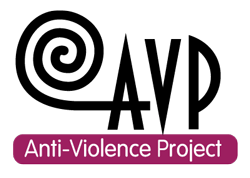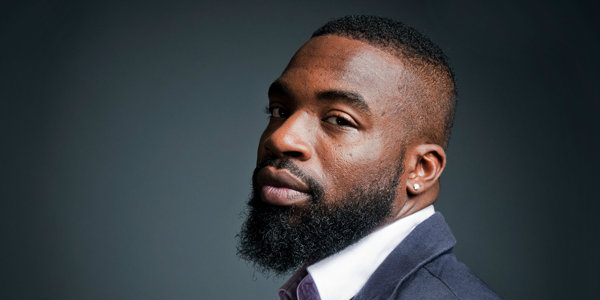Let’s Talk About: Recognizing Our Own Boundaries and the Boundaries of Others
This blog post is the second of a series of three posts exploring creating, recognizing and celebrating boundaries for this year’s Sexualized Violence Awareness week. Our first blog about CREATING boundaries can be found here! Keep an eye on our social media accounts to find out when the third and final post goes live!
A huge part of developing the skill of boundary setting is recognizing our own boundaries. This isn’t necessarily something we’re taught to honour in our world, and so determining where our boundaries lie can be a huge challenge. It’s also a challenge that’s ongoing, because as we grow and change, so do our limits! Checking in with ourselves is just as important as checking in with others.
What Shapes our Boundaries?
In order to recognize our own boundaries, it’s important to familiarize ourselves with our own wants and needs. These often shift and change as we learn and grow, and as a result, so do our boundaries and limits!
Wants are the things we enjoy doing, the things that turn us on, and/or give us pleasure.
Needs are the things we need to keep ourselves safe, whether physically, mentally, emotionally, or spiritually. They can also be related to our own bodies and abilities.
These are two of many factors that may shape our boundaries. Boundaries based on wants or needs aren’t more important than the other – all of our boundaries deserve to be heard and respected, regardless of the reasoning (or lack of reasoning) behind them. Just like needs and wants, these boundaries may just exist at the moment, or be lifelong commitments to ourselves!
There are many other things that may shape what we want our boundaries to look like. Some may include:
- Our cultural and social values or context.
- Our life experiences, including any trauma we may have experienced.
- COVID health guidelines, or other health related boundaries (eg. wearing a mask when inside with a friend, avoiding hugs, online bubbling up with folks who are vaccinated)
- Boundaries in virtual space, including social media!
We also may find our boundaries being shaped by the wants and needs of others. It’s always important to listen and check in with the people in our lives, to hear where they’re at with their own boundaries. That being said, our boundaries can co-exist with those of the people we care about – you do not have to change your boundaries to fit the needs of others.
Recognizing When our Boundaries are Crossed
Being able to identify when your boundaries are crossed is really important to setting and maintaining them. Identifying if your boundaries are being pushed or broken involves recognizing your personal limits. For example, recognizing when people put demands on your personal time, energy, or ability.
When your boundary is breached you may feel it physically somewhere in your body (like your gut, neck, shoulders, etc). When we don’t recognize these internal signals alerting us to our boundaries being violated, it can devalue our sense of self-worth, our relationships, and potentially lead to harmful situations if it continues.
Here are some possible signs that people in your life aren’t respecting/listening to your boundaries; that you have trouble setting boundaries, and/or that you’re not listening to your own boundaries:
- Pretending to agree when you disagree
- Concealing your true feelings
- Going along with an activity you don’t want to do without stating your preference
- Declining to join an activity you really want to do
- Justifying another person’s behavior
- Self-doubt
- Self-blame
- Overworking
- Ignoring your needs
- Not eating regular meals
- Insufficient sleep
- Too little or too much time alone
- Too much or too little exercise
- Insufficient contact with people you like to be around
- Substance use as a means of coping
- People pleasing behaviors
If you’re recognizing these patterns in yourself, it may be time to check in with yourself and the people around you about the best ways to identify and uphold your boundaries. You deserve to feel safe, respected, and heard. If you are in need of support with boundary setting, you can also reach out to us at AVP during support hours on the phone at 778 400 5007 or by email at support [at] antiviolenceproject [dot] org.
The ABCDs of Rejection
Part of respecting boundaries is learning how to receive a no! We’re not often taught how to receive a rejection, and it can feel sad, disappointing, inconvenient, or just uncomfortable. It’s absolutely okay to have complex feelings after being rejected! We’ve come up with a super fun model to address some of these feelings.
Try to remember the following when you’re faced with rejection:
- Affirm – Move away from catastrophizing through giving yourself affirmations ( eg. “I’m still worthy of love”, etc.)
- Breathe – Our reaction to rejection is often to lash out, push back, or run away – Remember to breathe, and take a pause to process.
- Care – Remember that you care about your own ability to say no and the personal autonomy of everyone. Responding with care to rejection creates opportunities for people to say no, which opens up more space for true yeses. This is an act of care.
- Debrief – Take time to debrief alone or with someone else. You can chat with a friend, write in a journal, or even call the AVP Support Line! Reflect on why you felt upset or what your expectations were, think of how you might meet this need/want in another way)
Recognizing our boundaries and those of others is a learning experience. Remember to be kind with yourself and others – and know that incorporating boundaries into your life is a gift to yourself and those around you. You’ve got this!
This material has been adapted from AVP’s Practising Boundaries Workshop, a new workshop that will be open to students and members of the community in the new year. Follow our social media for future announcements.







